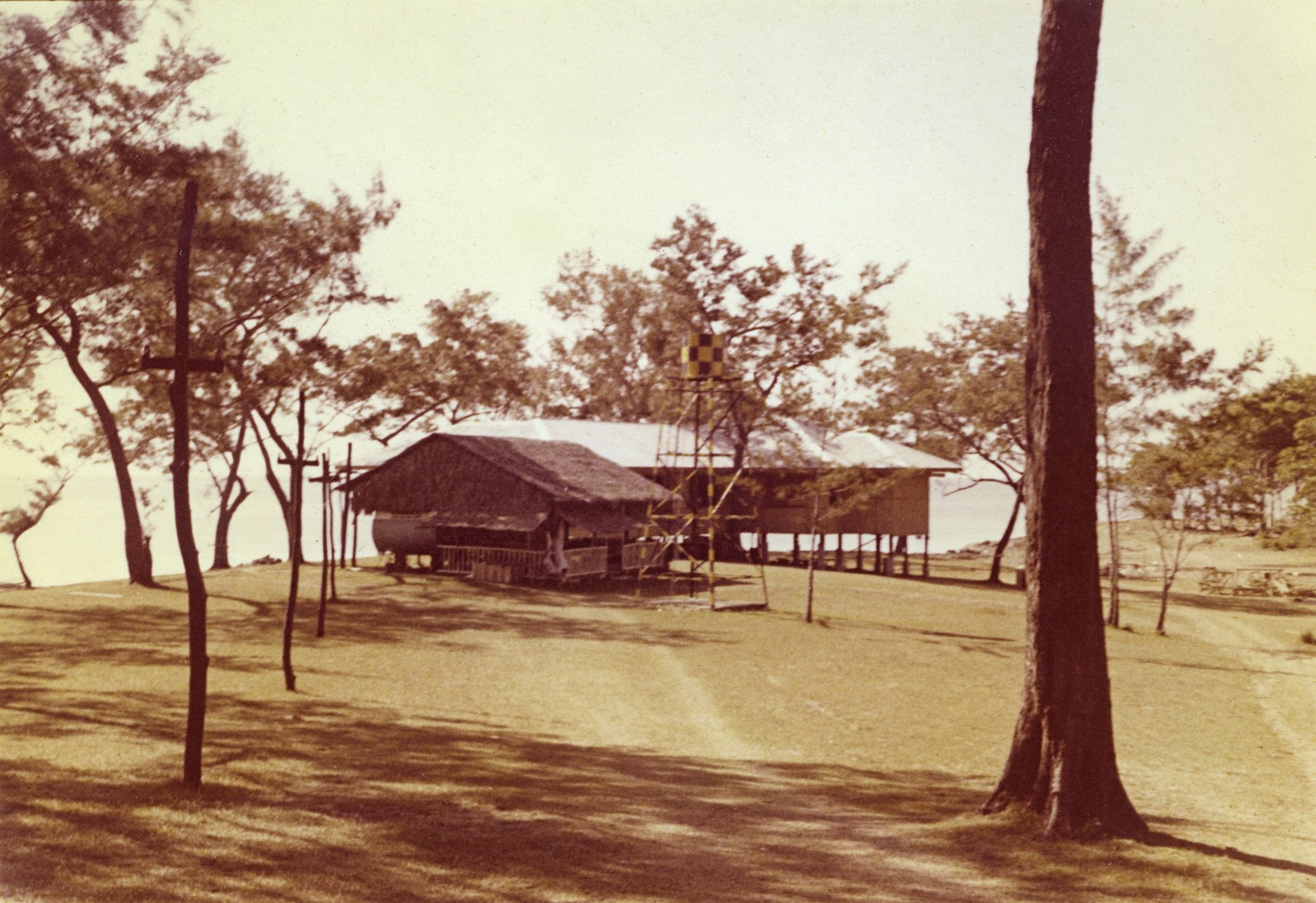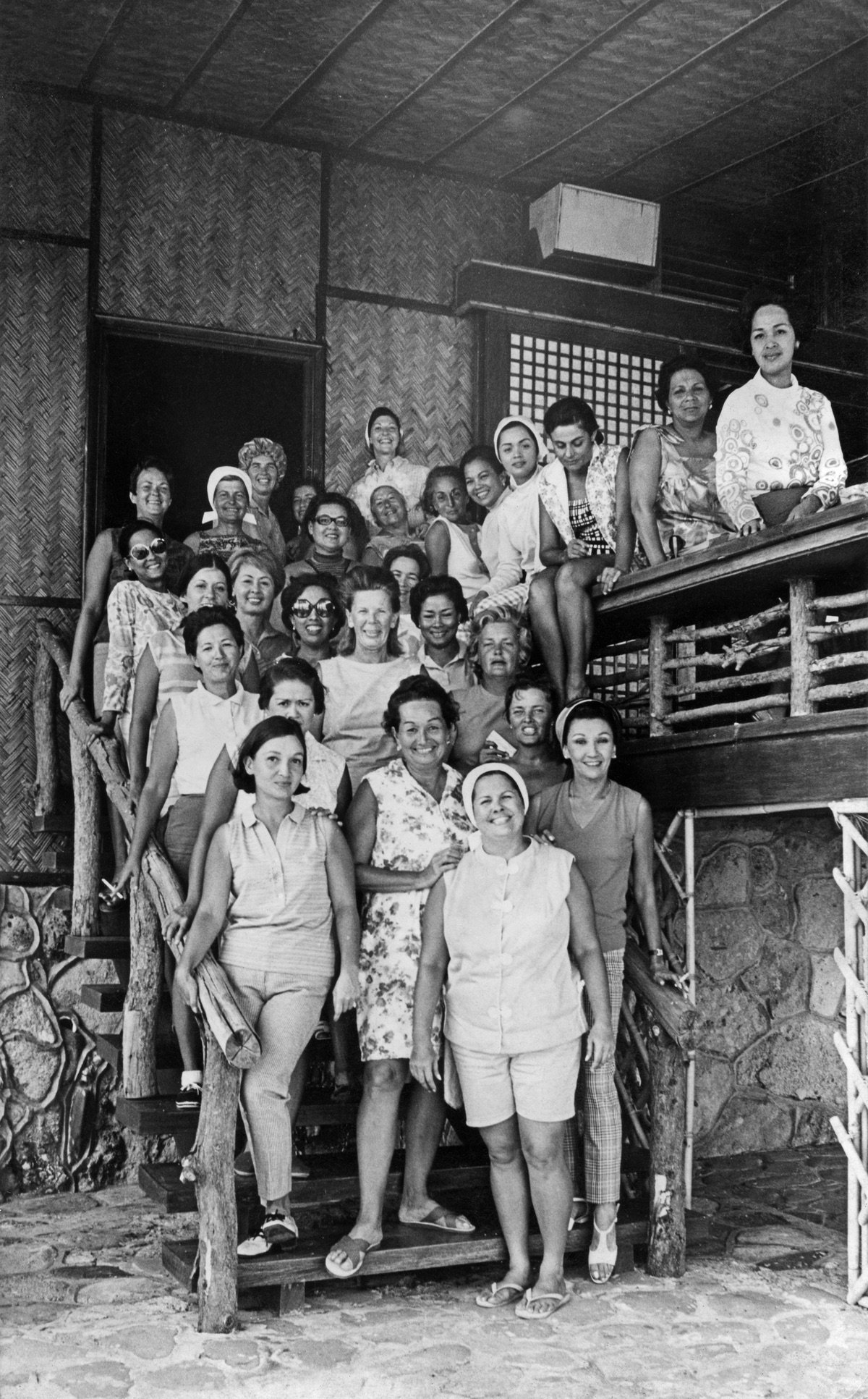Nurturing Nature
Sustainability by definition means meeting our own needs without compromising the ability of future generations to meet their own needs. In addition to natural resources, we also need social and economic resources. The Toda family in the Philippines knows this too well. Second-generation Rose Marie T. Delgado takes us back to when her father, Benigno (Beny) Toda, first spotted Hermana Mayor more than 60 years ago. Here’s the rest of the amazing island’s story in her own words…
Four hours from Manila by land, Hermana Mayor lies 12 kms off the coast of Santa Cruz, Zambales
Rose Marie: Many times the best way to develop an area is to honour what’s already there. Such is the case of Isla Hermana Mayor, an exquisite private island in the Philippines. Steeped in history and drenched in serenity, decades of nurturing nature have transformed the unblemished island into an awe-inspiring ecological legacy.
Our father Beny Toda first set eyes on Hermana Mayor in May 1958. He sailed from Manila with his best friend, Andy Soriano, and spotted the island just as the sun was starting to rise over the mountains. Awestruck by its beauty, they both wanted to buy it, and proposed a coin toss to determine who would get the chance. Luckily, our father won.
Hermana Mayor Island is in the South China Sea, off the coast of Santa Cruz in the Philippine province of Zambales. Spanning 500 hectares, it is a diverse and fiercely protected nature sanctuary, with translucent waters and white sand beaches, a rainforest in the south, grassland savanna in the north, and a natural lake in the middle.
Our father built the family home by a cliff on the southeast side – facing the mountains, where the sun rises. The house, a sprawling contemporary ‘bahay kubo’ (native hut) named El Sitio, was completed in December 1959, with 11 bedrooms and 12 bathrooms to accommodate all the guests our parents planned to entertain.
As early as the 1960s, El Sitio and Hermana Mayor already had all the amenities one could find in a home in Manila. Water supply was plentiful, and electricity was provided by large generators, allowing for air conditioning and heating as needed. Paired with the pristine natural environment, the island was an ideal retreat, particularly in those days when luxury beach homes and resort properties were rare in the Philippines.
El Sitio, the Toda family home, was built in the 1950s and still stands today after some renovations and additions over the years
A young Benjamin Toda deep fishing off the coast of Hermana Mayor
It was not uncommon for people to call on our parents to ask if they could entertain important visitors at Hermana Mayor, and they always graciously agreed. From the 1960s well into the 1980s, they hosted foreign dignitaries, businessmen, actors, celebrities, and even royalty at the island, alongside family members and their large circle of personal friends.
Visitors over the years included General William Westmoreland, who would spend rest and recreation periods at Hermana Mayor during the Vietnam war. President Ronald Reagan, then the Governor of California, enjoyed time on the island in the late 1960s. King Juan Carlos and Queen Sofia of Spain were special guests as well.
Former US President Ronald Reagan (then Governor of California) was a special guest of Hermana Mayor in the late 1960s
Our father was Chairman of Philippine Airlines at the time, and when they began to show movies on the planes, they would invite the foreign film actors to visit the Philippines. Glenn Ford and Kathryn Hayes spent time on Hermana Mayor during their visits in the ‘60s, as did American actor Hugh o’Brian, Italian actress Virna Lisi and more. Ricardo Montalban visited the island around 1975. His experience at Hermana Mayor served as inspiration for Fantasy Island, an American hit television series that ran from 1977 to 1984.
The locals nicknamed Hermana Mayor 'Miss Universe Island' because of its part in Miss Universe 1974, when the pageant was hosted in the Philippines. All the contestants were invited to Hermana Mayor, and a holiday stay at the island was one of the prizes for the Miss Universe crowned that year, Amparo Muñoz from Spain.
Participants of a friendly Women’s Golf Tournament hosted by Rose Marie on the island in the 1960s
Hermana Mayor Island, particularly at night, was one the most notable scenes of the time, epitomizing the colorful, effortlessly chic vibe of the ‘70s. Our parents hosted legendary parties on the island, overflowing with food and beverages and glamorous guests dressed to the nines drinking and dancing to disco music until the wee hours of the morning.
By the end of the 1980s, with beach homes and resorts more commonplace, the stream of foreign and business guests at Hermana Mayor settled down. The warm hospitality at the island never waned, sometimes with more than 50 guests in residence at a time, but weekends and holidays became focused around our family’s more immediate circle.
Hermana Mayor takes its rich character from more than just its legacy of hospitality, however. It also carries a proud history of careful conservation. Aside from being a legendary host, Beny Toda was a staunch environmentalist. In 1969 he began several projects with Hermana Mayor’s sustainability in mind, taking care to preserve and enhance the different microenvironments that made the island so extraordinary.
Projects included creating an aquarium and fishpond, clearing and planting work in the wildlife sanctuaries, as well dedicating and preparing land in various parts of the island for the introduction of new animal and plant species. He set aside seven hectares for an Arboretum, and invited friends and prominent guests to bring into the island species of their own choice, and set the plant themselves. A sign was placed for every species planted, which identified the plant’s botanical name, common name, family, the person it was introduced and planted by, and the date.
The island is a fiercely protected nature sanctuary, home to diverse micro-environments including pristine coral reefs, a rainforest, grassland savanna and freshwater lake
Stewardship of Hermana Mayor’s pristine nature is an integral part of the island experience
It was also around that time that Hermana Mayor’s coconut grove was created, with an initial 12,600 nuts planted in a 12x12-meter area. There are over 30,000 coconut trees there today, forming part of one of the most picturesque areas on the island.
Our father had bought all the animals on the island in a separate arrangement from the purchase of the island itself. These included cattle, deer, and all sorts of beautiful birds, including several Philippine ducks in the lake at the middle of the island. Hermana Mayor was also home to iguanas and snakes, as well as thousands of large fruit bats that would migrate to the mainland to feed, and then return to the island. He took measures to control but not eliminate the predatory animals, and at the same bring in more deer, birds and game fowl to add to those already there.
He also brought in a new, imported breed of cattle (American Brahman Stock), and developed 100 hectares of land to serve as a pasture area. Experimental poultry and piggery projects were started as well, with specific areas in the pasture and around the airstrip to grow crops that would serve as their feed. In time, the island’s livestock was well able to provide milk, eggs and meat for the family and our guests.
Through careful conservation efforts, Hermana Mayor has become a safe and thriving environment for the area’s endemic flora and fauna
The island has a ten-hectare freshwater lake at its centre, which is home to endangered Philippine duck
Grassland savanna in the northern part of the island
Through our continuing conservation efforts over the past 60 years, Hermana Mayor has become a safe and thriving environment for the area's endemic flora and fauna, which now include endangered species such as the Philippine duck and Calamian deer.
We made it a point to carry on our family’s traditions of hospitality and environmental preservation when ownership of the island was transferred to us, the second generation, in 1995. By then, Hermana Mayor had become as much of a magical place to our children as it had been for us in the early days. The island was a refuge, a place both calming and relaxing but also filled with extraordinary activities and daily adventures. In an island with such diverse environments, there is so much to do, and discover and enjoy. We’ve created countless memories here with family and friends.
Residential lots are thoughtfully woven in the island’s landscape to protect the environment and provide residents with space and privacy
In the 2000s we entertained the option of sharing the island with others. There was a plan to develop a luxury hotel on one part of the island for a while, but in the end this was discontinued in favour of developing a private, pocket community of long-term homeowners instead. We’re now opening up the island little by little to welcome new residents, making sure residential lots are thoughtfully positioned to protect the environment, and provide families with ample space and privacy.
Conservation has always been at the core of the island’s development, and stewardship of Hermana Mayor’s pristine nature is an integral part of the island experience. Plans for future development keep this conservation top of mind, with a focus on sustainable Filipino architecture, solar and renewable energy use, electric vehicle integration and the adoption of environmentally responsible technologies.
We’ve also put in place specific sustainability guidelines for our homeowners and residents, which include rules for water and energy conservation, biohabitat preservation and restoration, healthy building practices, carbon footprint reduction, as well as proper waste management.
The goal is, and always will be, to preserve the raw natural beauty of Hermana Mayor. We want to ensure that we keep the wild and natural beauty of Hermana Mayor, while at the same time, employing the latest technology in energy, connectivity and sustainability.
Rose Marie T. Delgado
We will always welcome change and modern technology, but on Hermana Mayor we value our legacy more. The things that made the island so special when our father first set eyes on it back in 1958 are the same things that make it magical for us, for our children and grandchildren today, over 60 years later. We want to preserve that, along with the traditions and memories we’ve built here, and pass them all for generations to come.
Rose Marie T. Delgado| guest contributor | ws
Images: Hermana Mayor Island | IG: isla.hermanamayor












